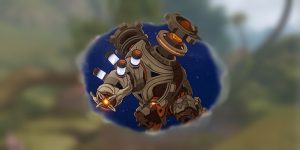Why The Dream Chaser Space Plane Could Succeed Where The Space Shuttle Failed

Sierra Space announced they are building a new Dream Chaser to take astronauts to space. This is just an example of its commitment to the construction of a new commercial space station with Blue Origin. The company also has contracts with NASA to deliver payloads to the International Space Station using the Dream Chaser.
Last year, Sierra Space announced a new approach to space station construction. Instead of taking up heavy components or building modules in space, they proposed inflatable structures. Weight and cargo space are the two main constraints in space flight, and inflatable habitats are a viable solution for both problems.
In Las Vegas, at the Consumer Electronics Show 2022, Sierra Space announced that they are scaling their Dream Chaser to carry astronauts into Low Earth Orbit. While the Dream Chaser does look a lot like the Space Shuttle, its differences are why it could succeed where the Shuttle failed. Both the Space Shuttle and Dream Chaser have been built to build space stations, but the Dream Chaser is smaller, lighter, uses a different launch system and its reentry is different.
The Dream Chaser: A Little History On Aeronautics

The first space plane was NASA’s X-15. It was small, agile, launched in mid-air by a B-52, and its body was covered in Inconel-X, a superalloy. Inconel-X withstood the 1300 degrees Fahrenheit that happens during hypersonic flight and reentry. The original designs of the Space Shuttle of 1970 were a very scaled-up version of the X-15. Everyone knew it would work because the X-15 was successful, but it had a problem, it was costly to build, especially since the space race was over.
Budget cuts and lack of political will ended up changing the Shuttle. First, the launch system was altered for a rocket, and then more budget cuts led to a solid rocket boosters launch system. Engineers warned that solid rocket boosters could not be turned off once they started. This was what caused the Challenger tragedy years later. The Shuttle also got bigger and bigger. This forced engineers to extend the wings, and this extended the contact surface that heated up upon reentry. A “Tile Protection System” was designed to protect the Shuttle, but the system was flawed. It caused many problems and finally triggered the Columbia reentry tragedy killing another seven astronauts and canceling the era of space-planes.
The Dream Chaser is very small when compared to the Shuttle. Its size is its strength. It Is agile and can take on safe reentry configurations. Its wing surface is not as big as the Shuttle’s because it is not that heavy or big. It does not launch on rocket boosters. Instead, it launches on top of a standard rocket, mounted like a capsule. These are significant differences in aeronautics. Sierra Space says that the Dream Chaser is a third-generation space-plane built on four decades of the Shuttle’s legacy. The Shuttle failed to make space travel safe and affordable, but it also flew 135 missions, 400 people to space, built the ISS, and repaired the Hubble. Like the Shuttle, Dream Chaser will also make a new space station and carry astronauts to space on a spaceplane once again.
Source: Reuters, Aeronautics Online

















